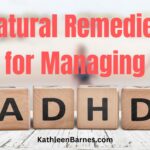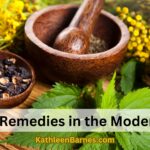 It’s that time of year. The holidays are over, the decorations packed away for another year, presents unwrapped and half of them returned. The party laughter has faded, the credit card bills are coming in and the world outside is gray and cold.
It’s that time of year. The holidays are over, the decorations packed away for another year, presents unwrapped and half of them returned. The party laughter has faded, the credit card bills are coming in and the world outside is gray and cold.
So January makes you feel a little blue as the long winter stretches endlessly ahead of you? There’s a simple explanation and a simple solution.
Sure, post-holiday doldrums could be expected after the holiday hoopla.
But you could also be suffering from seasonal affective disorder (SAD), a type of winter depression that has been linked to vitamin D deficiency.
We humans cannot manufacture vitamin D on our own. We need sunlight or vitamin D in a small handful of foods (like cod liver oil) in order to make the vitamin D that has so many powerful effects on our bodies.
But what happens in winter, when most of us North Americans need to cover ourselves with heavy coats jackets and hats and we get little, if any, direct sunlight on unprotected skin?
Our bodies can store vitamin D for two or three months. It’s no coincidence that natural vitamin D stores run out at the darkest time of the year, two or three months after the memory of balmy autumn days in September and October has faded.
So it’s no surprise that here we are in January, feeling blue.
When we talk about depression, we are talking about all types of depression, not just seasonal affective disorder (SAD).
But let’s look at SAD for now, since it has a very apparent link to vitamin D.
SAD most commonly begins in winter and is more common in women than in men. Most sufferers have normal mental health during the rest of the year.
SAD is characterized by the following laundry list of symptoms:
• Afternoon energy slumps
• General lack of energy
• Increased need for sleep at night and in the daytime
• Decreased ability to concentrate
• Decreased interest in work and other activities
• Increased appetite, carbohydrate craving, resulting in weight gain
• Sluggish movement
• Social withdrawal
Winter depression is common in residents of the northernmost latitudes of the globe where sunlight is extremely limited or even non-existent during the winter months. Without exposure to direct sunlight or supplementation through food sources or supplements, our supplies run low as the winter progresses.
Dr. Michael Holick, a Boston University researcher and pioneer in vitamin D research, theorizes that 95% of all North Americans are vitamin D deficient in winter. The National Institute on Aging takes that projection a step further and theorizes that as many as 100% of older people have low vitamin D levels in winter.
It’s not surprising that lack of sunshine—and a shortfall of the sunshine vitamin—may lead to SAD. Researchers at Baltimore’s Union Memorial Hospital found that depressed women who received vitamin D therapy either through supplements or exposure to sunlight for a month improved their blood levels of vitamin D by as much as 74% and boosted their moods by 26%.
Interestingly, a Canadian study shows a link between SAD and bipolar disorder in as many at 20% of people with winter depression, with moods fluctuating from depression in winter to euphoria in summer. It has also been documented that vitamin D assists in the production of serotonin, an important neurotransmitter or brain chemical. Without enough serotonin, we become depressed and without enough vitamin D, we don’t make enough serotonin.
It’s pretty simple to make the connection between the lowered levels of vitamin D in winter and the lower serotonin production to create depression.
The simplest way to boost your vitamin D levels in winter is through taking a supplement. Most experts recommend 5,000 IU of vitamin D3 a day in winter and some of us need even more. Vitamin D is actually considered a hormone by some experts, so it’s wise to have your levels tested and determine whether you are deficient. If you are, have your health care professional help you determine how much to take.
SAD is sometimes treated with bright light therapy, using light boxes, some of which emit UVB radiation of the same type that triggers vitamin D production in our skin.
Light box therapy can be used alone or combined with antidepressant medications. Light boxes mimic sunlight and they are believed to trigger chemical changes in the brain to elevate mood. Light therapy is also used to adjust sleep cycles, re-establish circadian rhythms and increase the production of melatonin, all of which can help relieve depression.
I’m not a big fan of pharmaceutical antidepressants because of their side effects and their questionable effectiveness, but there are many herbs and supplements that have scientifically validated anti-depressant capabilities, including St. John’s wort, rhodiola rosea (Siberian ginseng), SAM-e, 5-HTP and l-tyrosine.
You should get relief within two weeks. If not, try something else.
Exercise is also an excellent antidote to depression, so a brisk 20-minute walk every day can do wonders for your mood.
Some people use tanning booths to get the UVB exposure but I do not recommend that because most tanning machines are not carefully calibrated and repeated exposure can result in skin damage.
Then you could make it all very simple and take a tropical vacation, soak up some rays on the beach and perhaps sip a margarita or two along the way.







